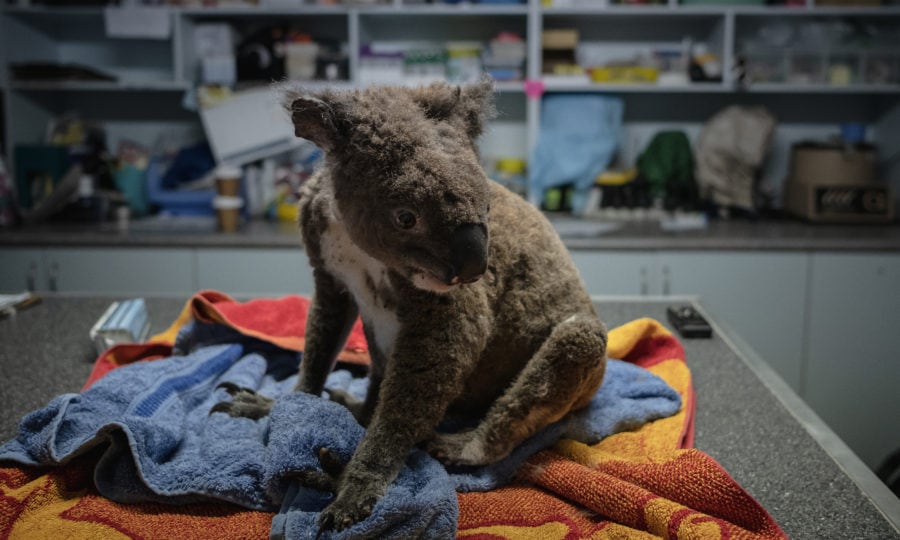Koalas rescued from the bushfires make a return to the Blue Mountains

KOALAS HAVE BEEN returned to their Blue Mountains home after they were daringly rescued in December from approaching flames.
The first four of the 12 koalas rescued have been released into the eucalyptus forests of Kanangra-Boyd National Park after recent rains resulted in enough food to support them.
The executive director of Science for Wildlife, Kellie Leigh, who lead both the rescue and return of the koalas, says she’s delighted to finally send them home.
“We have been busy assessing the burnt area that we rescued them from, to establish when the conditions have improved enough that the trees can support them again.

“The recent rains have helped and there is now plenty of new growth for them to eat, so the time is right. We will be radio-tracking them and keeping a close eye on them to make sure that they settle in okay.”
The rescue by Science for Wildlife was a last ditch attempt to save the genetically diverse population of Blue Mountains koalas.
Three adult male koalas and five adult females (four of which were carrying joeys) were saved from the flames.
“During the massive fires, as 80 per cent of the World Heritage Area burnt, we were at risk of losing the entire koala population at this site and so that’s what drove us to try something so radical and pull these koalas out before the fire hit,” Kellie Leigh says.
This is the first step in the long road to recovery for New South Wales koalas, who were already under pressure from deforestation prior to the 2019/2020 bushfires.
“The radio-tracking devices that enabled us to find the koalas quickly and move them from in front of the fire will now allow us to follow them and find out more about how koalas use the landscape after fire.”
This includes, Kellie says, “where else we might find pockets of surviving koalas. That will help us to plan a future for koalas under climate change, where we expect more frequent and intense fires”



